If you’re craving bold flavors with minimal effort, these Korean Beef Bowls are the answer! In just 30 minutes, you’ll have a dish packed with caramelized ground beef, a hint of sweetness, and a touch of spice—all topped with quick-pickled veggies for that perfect crunch. Whether you’re meal prepping or whipping up a quick dinner, this recipe is sure to be a hit with the whole family!

The first time I tried Korean beef at a local restaurant, I couldn’t get enough of it! I was blown away by the perfect balance of sweetness, spice, and that irresistible umami flavor. The secret? A hint of sugar that helps caramelize the beef, creating a rich, deep flavor.
While I love authentic Korean bulgogi, I often need something quicker and easier for busy weeknights. That’s where this Korean Ground Beef Bowl comes to the rescue. In just 30 minutes, you can have a meal that’s nearly as flavorful as the original, without all the fuss.
Why You’ll Love This Recipe
- Dinner, fast: It’s ready in under 30 minutes.
- Batch it up: Perfect for meal prep.
- Weeknight friendly: Uses pantry staple ingredients.
- People pleaser: Customizable for all the picky palates in your house.
- Give it a little love: Add some homemade quick-pickled veggies to take the dish to the next level.
Don’t forget to serve it with a heaping scoop of jasmine or white rice to complete the meal!
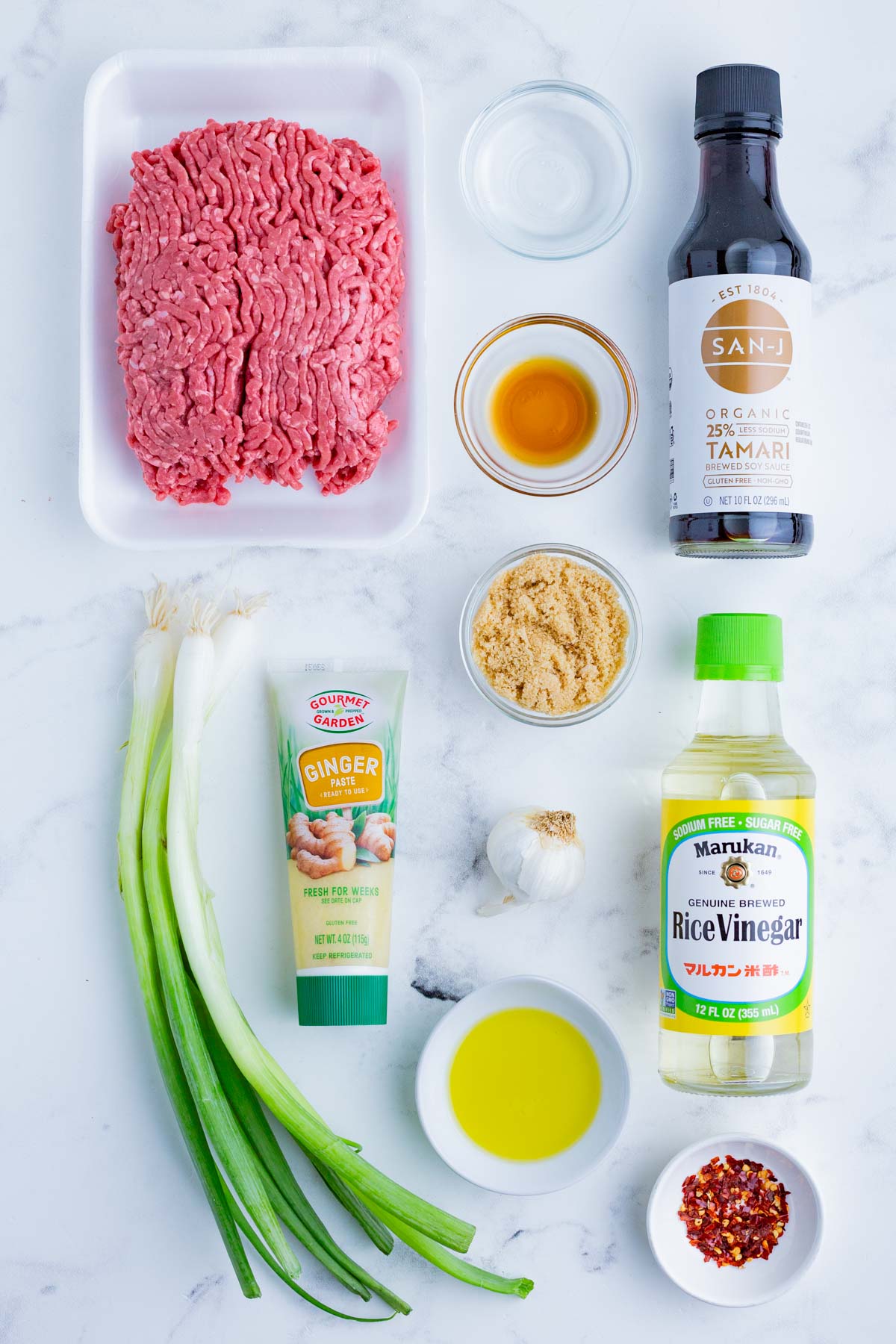
Ingredients
Please see the recipe card below for the exact measurements.
- Ground Beef. Opt for 85/15 lean ground beef for the perfect balance of fat and flavor. Ground turkey or chicken work, but won’t taste quite the same.
- Sesame Oil. Use toasted sesame oil for that extra umami punch. Don’t skip this ingredient!
- Garlic. Minced garlic is essential. If needed, substitute with garlic powder.
- Green Onions. Separate the whites from the greens.
- Soy Sauce. Regular or low sodium soy sauce is fine, or use Tamari or coconut aminos.
- Ginger. Ginger paste is convenient, but fresh ginger works great too.
- Sugar. Brown, white, or coconut sugar all work well.
- Rice Vinegar. Adds authentic flavor; apple cider or red wine vinegar can be substituted.
- Toppings. You can choose your favorite fresh veggies like broccoli or carrots, or go with pickled carrots and cucumbers to add an amazing tang of flavor! (It’s so easy to make your own pickled veggies for a topping.) But my absolute favorite? A generous dollop of gochujang for that extra kick of spice.
Note: You can make this dish as spicy or mild as you like based on what you add.
How to Make Korean Beef Bowls
Please see the recipe card below for more detailed ingredient amounts and for the printable instructions.
- Cook the beef. Warm a skillet over medium heat, then add a tablespoon of oil and the ground beef. Cook until it is almost completely browned. Push the meat to the side of the pan with a spatula or wooden spoon.
- Add the green onion and garlic. Drizzle another tablespoon of oil along with the white parts of the green onions, garlic, and ginger. Continue cooking for another 30 to 60 seconds.
- Make the sauce. In a medium or small bowl, whisk together the soy sauce, brown sugar, rice vinegar, sesame oil, and red pepper flakes. Pour the savory sauce over the beef and veggies and stir it in. Let the sauce ingredients simmer over medium-low heat for another 1 to 2 minutes.
- Finish and serve. Stir in the green parts of the green onions and cook for one more minute. When you’re ready to enjoy the dish, add a scoop of rice to a bowl then top with some of the cooked beef. Sprinkle some pickled cucumber and carrots along with toasted sesame seeds and gochujang if desired. Stick with cauliflower rice for a low-carb option. Or, serve the flavorful ground beef in lettuce wraps.
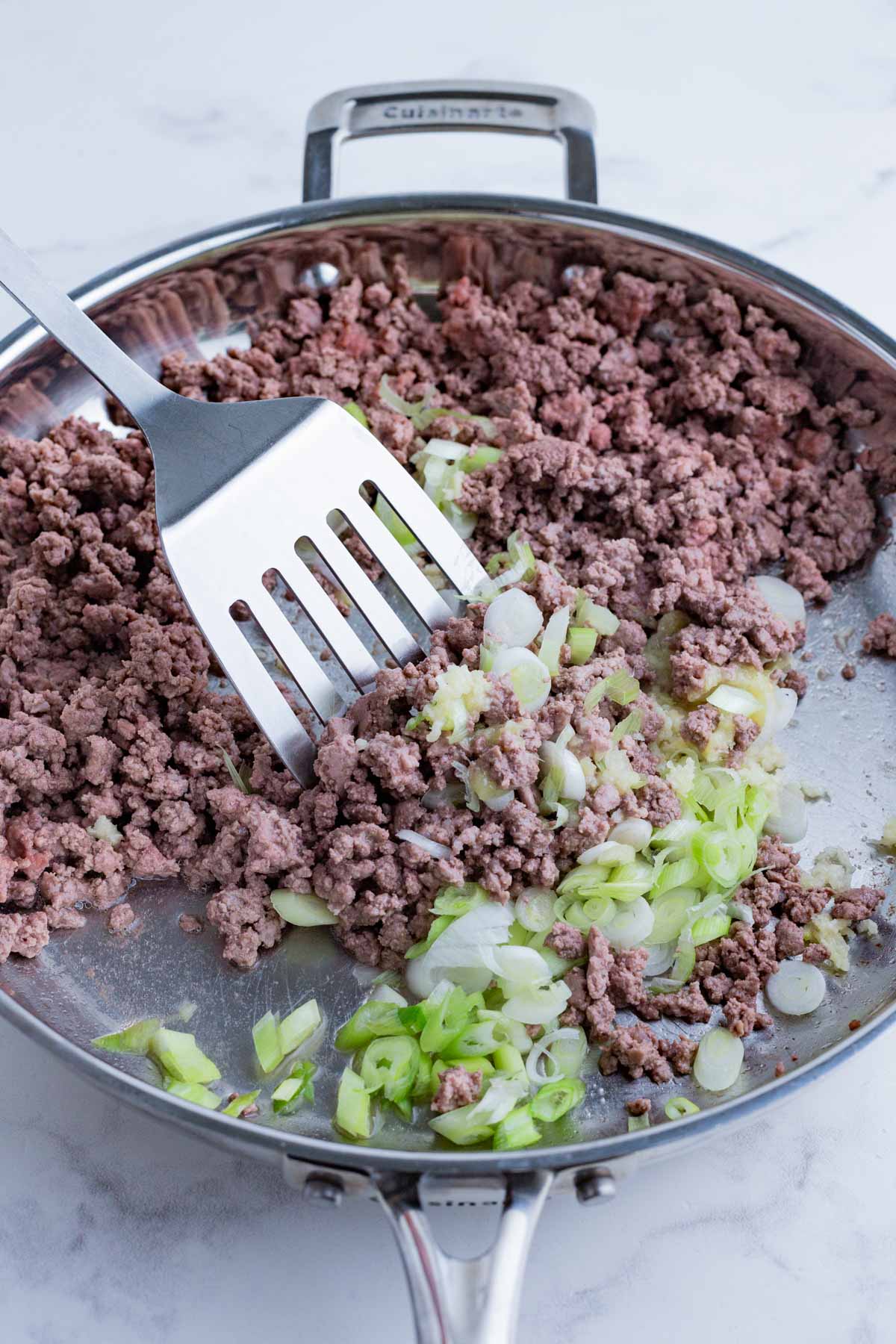
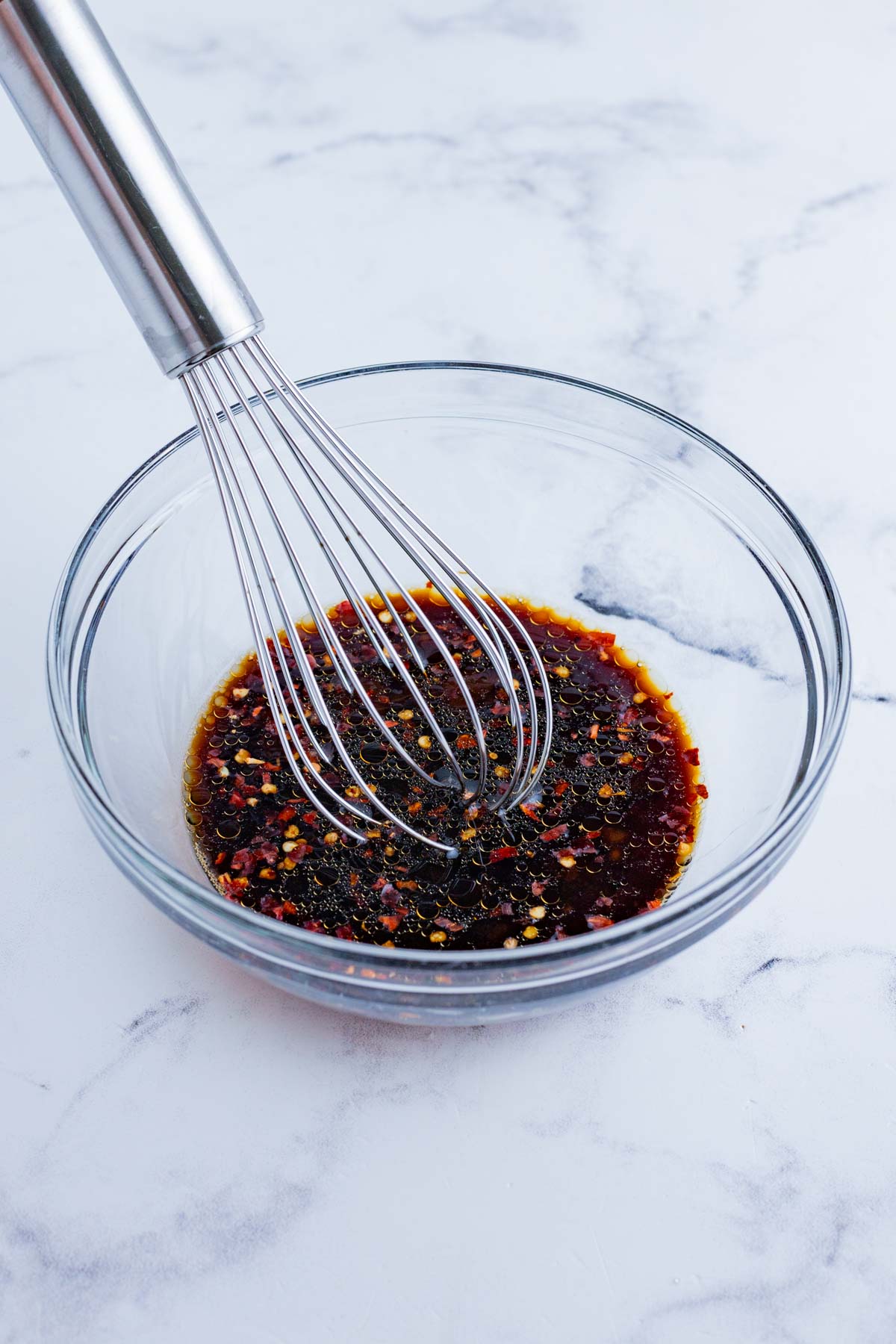
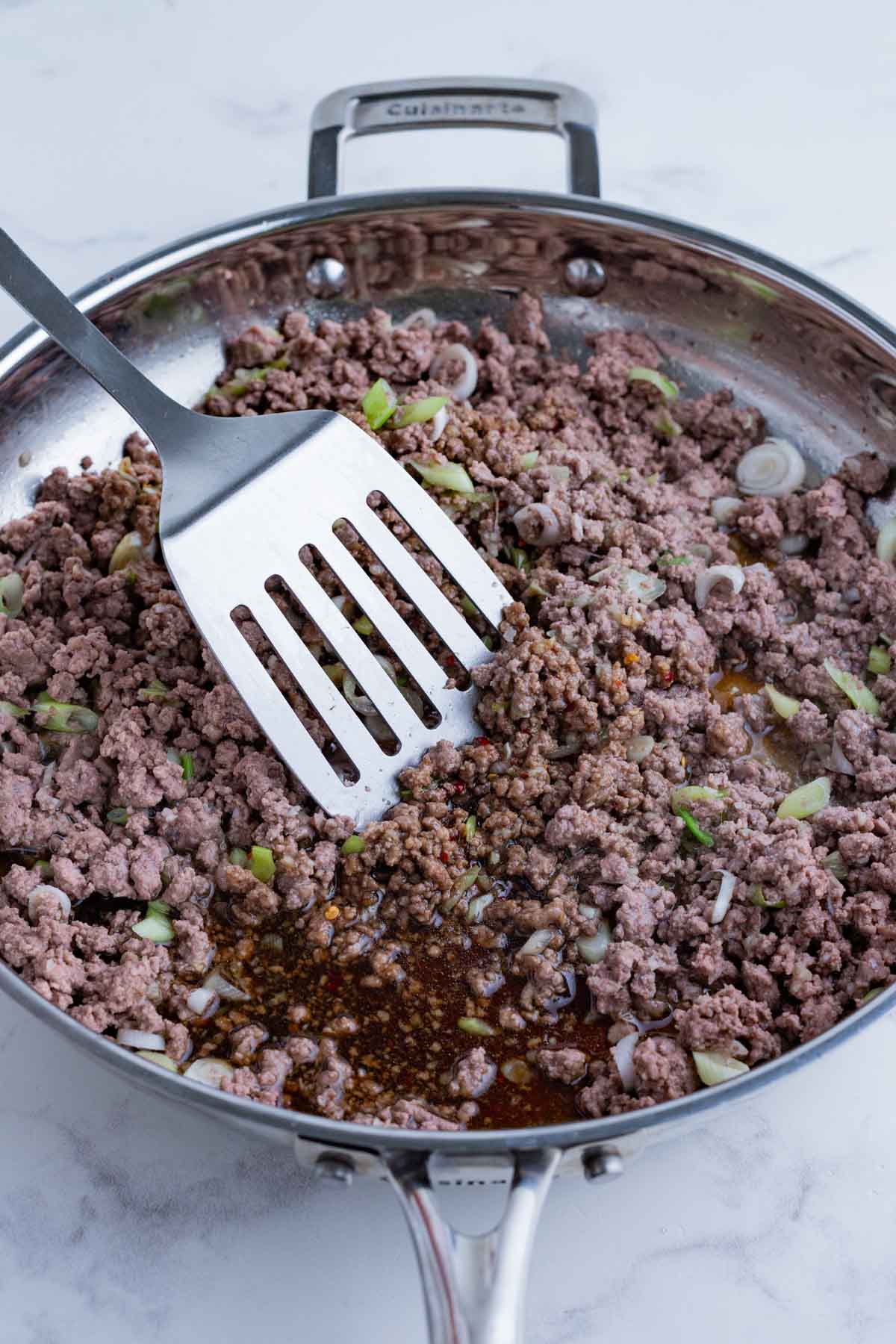

Meal Prep and Storage
- Prep-ahead: Make the pickled carrots and cucumbers a few days early. You can also make the sauce and leave it in the fridge.
- Storage: Keep the leftover Korean beef, rice, and toppings each in a separate airtight container for the best results. The beef and rice will last 3 to 4 days in the fridge. You can freeze completely cooled beef in a freezer-safe bag for 3 to 4 months.
- Reheating: Warm Korean beef back up in the microwave or in a skillet over medium heat.
FAQs
Korean beef is beef seasoned with a variety of Asian spices and sauces. It is often called Korean beef bulgogi. Usually, this beef is cooked on an open fire, but you can make it in a skillet or in the oven, as well.
You can eat just about any side with Korean beef, though rice is the most common dish. It’s delicious when you include healthy veggies and spicy sauces, as well.


What to Serve with Korean Beef
Korean beef, just like many Asian dishes, is delicious on a pile of rice. But there are so many other tasty sides you can pair it with, as well.
Try a rice recipe like Instant Pot White Rice, Sushi Rice, Instant Pot Basmati Rice, or Jasmine Rice. Change things up with Coconut Rice or Cauliflower Rice, too.
Don’t forget the veggies, like Steamed Broccoli, Blanched Green Beans, and Boiled Carrots.
More Asian Recipes
If you love Asian food, then you have to give these recipes a try next.
- General Tso’s Chicken
- Korean Glass Noodles
- Pineapple Chicken
- Teriyaki Chicken Stir Fry
- Beef Stir Fry
- Miso Glazed Salmon
Tap stars to rate!
Korean Beef Bowls

email this recipe!
Ingredients
- 3 tablespoons soy sauce or tamari
- 3 tablespoons packed brown sugar
- 2 tablespoons water
- 1 tablespoon rice vinegar
- 2 teaspoons toasted sesame oil
- ¼ teaspoon salt
- ¼ teaspoon black pepper
- ½ teaspoon red pepper flakes
- 2 tablespoons avocado oil divided
- 1 pound 85/15 ground beef
- 4 green onions white and green parts, thinly sliced, divided
- 3 garlic cloves finely minced
- 2 teaspoons finely minced fresh ginger
For Serving:
- 2 cups cooked white rice
- Fresh or pickled carrots and cucumbers
- Toasted sesame seeds optional
- Gochujang or sriracha optional
Instructions
- Whisk together the soy sauce, brown sugar, water, rice vinegar, sesame oil, salt, pepper, and red pepper flakes in a medium bowl. Set aside until ready to use.3 tablespoons soy sauce or tamari, 3 tablespoons packed brown sugar, 2 tablespoons water, 1 tablespoon rice vinegar, 2 teaspoons toasted sesame oil, ½ teaspoon red pepper flakes, ¼ teaspoon salt, ¼ teaspoon black pepper
- Add 1 tablespoon of the avocado oil to a large skillet over medium heat. Once heated, add beef and cook, breaking apart, until no longer pink, about 7-8 minutes. Push beef to one side of the skillet and add the remaining 1 tablespoon avocado oil, the white parts of the green onions, garlic, and ginger. Cook for 30 seconds, or until fragrant.1 pound 85/15 ground beef, 3 garlic cloves, 2 teaspoons finely minced fresh ginger
- Pour the sauce into the skillet with the beef, stir, reduce heat to medium-low, and simmer until liquid is reduced by half, about 4-5 minutes. Stir in three-quarters of the green parts of the green onions and cook for another minute.
- Serve over cooked rice with the remaining green onions, pickled or fresh cucumbers and carrots, toasted sesame seeds, and gochujang.2 cups cooked white rice, Fresh or pickled carrots and cucumbers, Toasted sesame seeds, Gochujang or sriracha
Tap stars to rate!
Video
Notes
- Nutrition. Facts are calculated with 4 oz. ground beef and sauce and ½ cup of cooked rice.
- Spice. Feel free to leave out the red pepper flakes to decrease the spice level.
- Quick Pickling. Pickle the cucumbers and carrots a day or two before for the best flavor! (Get the pickled carrots recipe, and the pickled cucumbers recipe.)
- Storage. Keep the leftover Korean beef, rice, and toppings each in a separate airtight container for the best results. The beef and rice will last 3 to 4 days in the fridge. You can freeze completely cooled beef in a freezer-safe bag for 3 to 4 months.
Nutrition
Nutrition information is automatically calculated, so should only be used as an approximation.





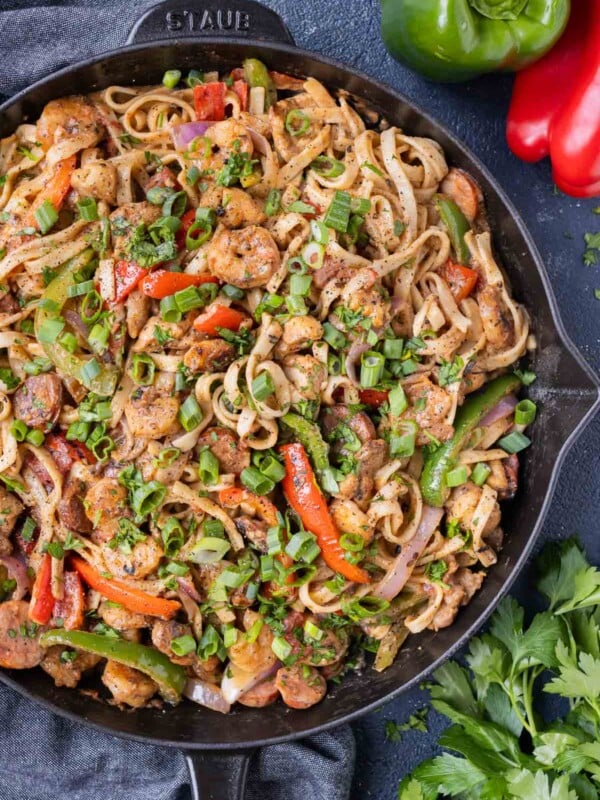

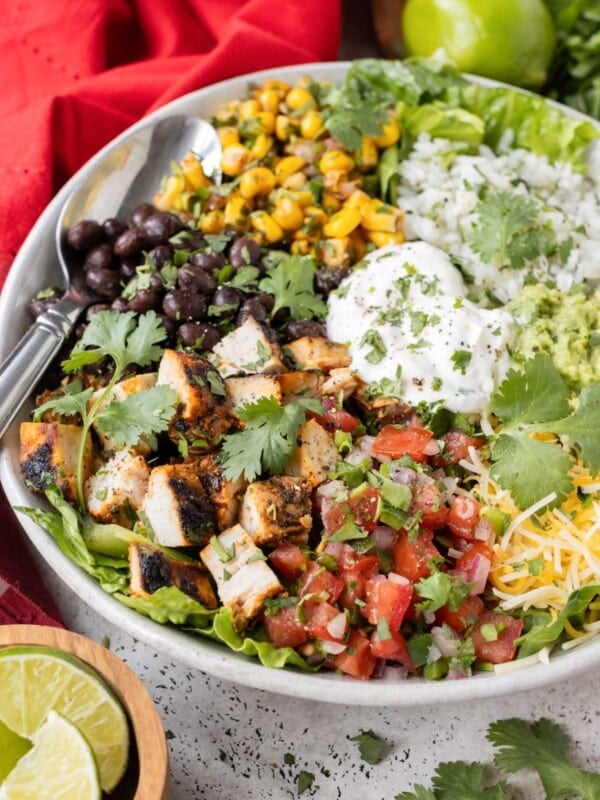
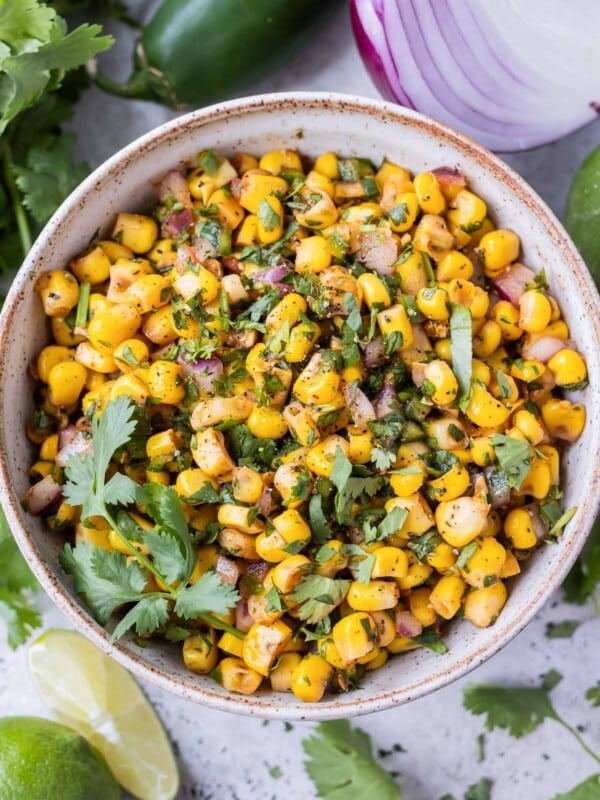









Our meals have been very blah lately, and so I was excited when I opened my inbox yesterday morning and realized I had all the ingredients for this on hand. The only change I made was omitting the salt, as I used regular tamari (not sodium-reduced). I also added extra red pepper because we love spice. I doubled the recipe and my family devoured it all. I already ordered groceries to make again this weekend… but this time with the pickled vegetables. Thx for such a winner!
Yay yay yay!! I’m so happy to hear that. I’m sure it tasted amazing with the extra spice! Next time try finding the gochujang suace too- it’s like a slightly sweeter version of Sriracha that is SO good!